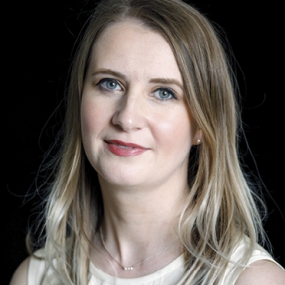- Bulletin: Spring 2025
- Training and careers
Juggling the list – patient care and training opportunities
Dr Sarah Muldoon looks at the conflict many consultants experience in their careers; giving patients the best care and providing meaningful training opportunities for their trainees.

Almost five years have passed since I finished training.
I thought I was prepared for the sense of responsibility I would feel as a consultant. I feel very responsible for the quality of care the patient receives – I want it to be as near perfect as is within my control. I feel responsible to my surgeons to do my job well so they can do likewise. I feel responsible for getting the theatre team home on time. I feel responsible for residents benefiting from each list and finding our department a good place to work and train.
I like to believe I was a diligent anaesthetist in training; I saw the patients, thought about my learning needs, was more help than hindrance with practical skills (I implore colleagues not to write in to argue). I undertook advanced airway training and fervently performed as many awake tracheal intubations as possible. I loved the partnership I had as senior registrar with more junior residents on many a night shift rota, lots of whom remain great friends and colleagues to this day.
So, among things I fretted about when starting as a consultant, supervising anaesthetists in training was not high on the list, and I was acutely aware I had benefited from supervision and training by others. Yet, I found it unexpectedly challenging to balance delivery of optimal, efficient patient care with providing training.
I specialise in neuroanaesthesia – lots of lines, intubations, difficult airways, complex positioning. My department provides three months of Stage 2 neuroanaesthesia training to every resident in south-east London and many from Kent and Surrey. Until recently I was responsible for overseeing the training module. So, my personal struggle with this issue seems worth some introspection. I became a consultant at a time when training was sacrificed to Covid ICUs, so initially I rarely worked with anaesthetists in training. I developed skills and confidence in my new role, established relationships within theatre, and improved my efficiency with list management.
When Covid let up and our ST4s came back, I had become an anaesthetist who has ‘a way’ – a favoured muscle relaxant, preferred ventilator settings, and a preferred order for infusion pumps. I have a reasoned (I think!) justification for each quirk, and explaining them to a new colleague adds an element of mental work to the day. Anaesthetising for similar cases regularly with a consistent team means I have developed an efficient pattern. Having someone else join me introduces some entropy to proceedings. I became conscious, particularly with residents I hadn’t worked with before, that I was having thoughts like ‘I could do this faster by myself’ – then I remembered all the consultants and patients who’d been so accommodating each time I appeared expectantly wielding a fibreoptic scope in their anaesthetic room.
I also noticed that it felt easy to praise an anaesthetist for having a great list, but difficult to offer feedback when something hadn’t gone well.
I haven’t nailed any of this yet, but I am proactively working on it.
I try to acknowledge my own pathological perfectionism and to allow myself and others to be ‘good enough’. I am upfront if there are stressors that impair the ability to put training at the forefront of a list. I try to remember that the point of training is incremental improvement, and that valuable learning comes from constructively discussing the imperfect.
It helps me when a resident joins the list having thought about the patients, the cases, and what they hope to gain from the day. If someone wants to do a particular procedure, I find it useful to talk about the knowledge or previous experience they’ll be drawing upon, and what their strategy will be if things don’t go as planned.
Training is a two-way street, an interaction or relationship that needs mutual respect. It also has to be patient centred – for that patient on that day, and with consideration of the future patients for whom today’s resident may be the future consultant.
I encourage everyone to study the Education and Training capabilities in the Stage 3 curriculum alongside RCoA guidance on developing independent practice. Anaesthetists at all stages of their careers can practise and improve their supervision alongside their clinical skills. The better you get at each, the more bandwidth you have to help others learn.
Would you like to read more articles from this Bulletin?

